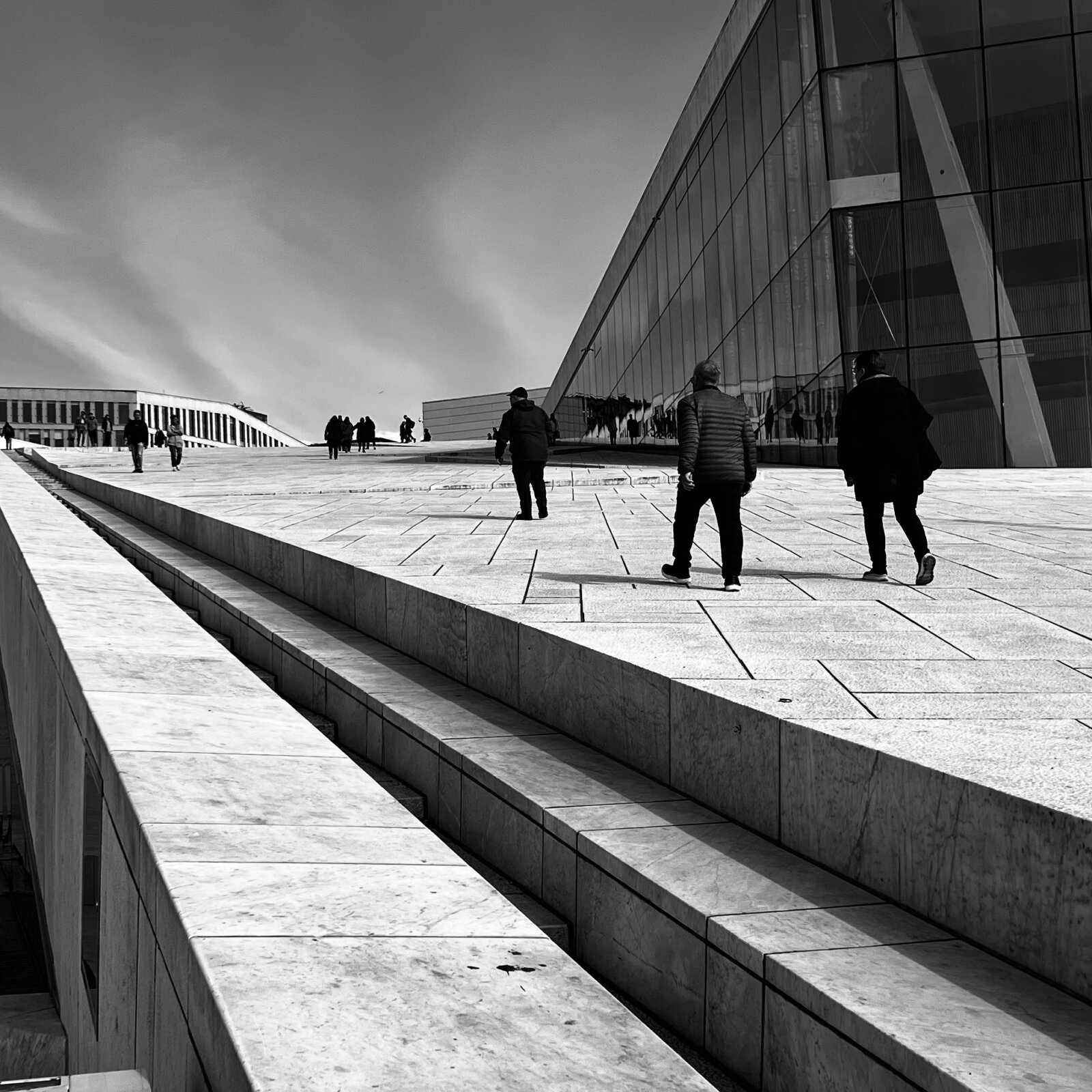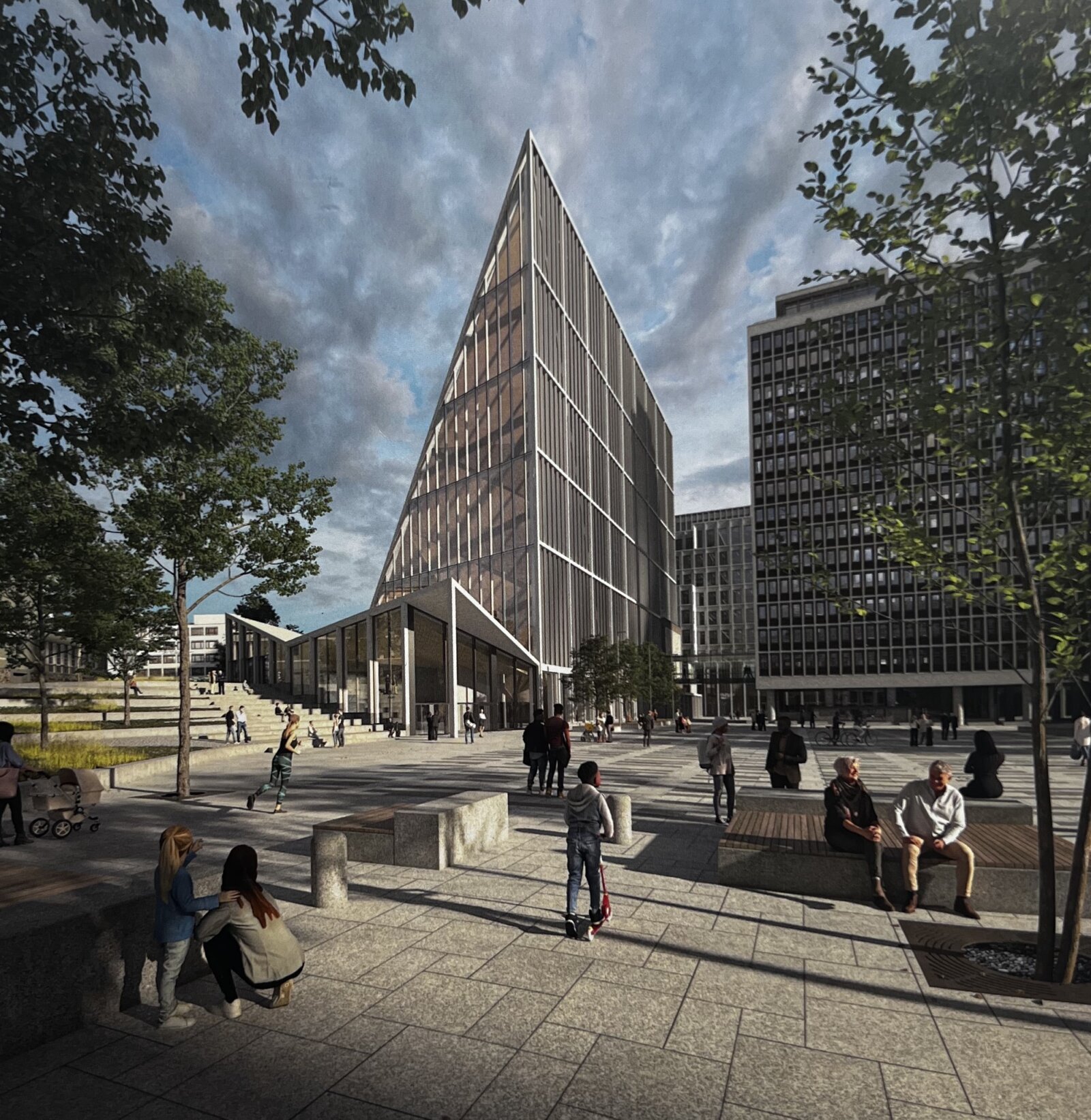blog
Oslo - An architects tour
Blog — 18 May 2023
Every so often The Architecture Club arranges overseas study trips, the last one was in 2019, a memorable visit to Eritrea focussing on the art deco buildings of its capital Asmara.
This year the Club visited Oslo, capital of Norway and home to around 700,000 people. Norway is a large sparsely inhabited country with a population of around 5.5m, and a relatively new independent country with a consequently strong national identity. As a result of its oil and gas reserves it is also a rich country, its sovereign wealth fund owns 25% of Regent street for example, and if the fund were distributed each Norwegian would have credit to the tune of £250k. Taxes are high and public services are exemplary, something we in Britain look at with a good deal of envy. This is reflected in recent building and infrastructure projects.
Snøhetta’s opera house is now 15 years old and a firmly established landmark in the city. Its success is twofold as a technically excellent auditorium, and perhaps more importantly as a public space. The genius of the design was to break down the traditional barrier between 'High opera' and the citizens of Oslo. The building is not an object, it is a work of landscape design, it's roof and terraces are seamlessly integrated with the wider city.

In that respect it is interesting that when Oslo decided it needed a new library convention was again discarded and a brief developed that put people not books at the heart of the building. The Deichman Library was designed by studio Atelier Oslo and Lund Hagem. From the outside it is a fairly ordinary looking glass clad horizontally organised building. The interior is quite different, the glazed facade becomes a filter that controls the internal light levels, the multi-level space is organised around three top lit diagonal atria which animate the busy layout of reading spaces, book stacks and collaboration spaces. The result is unlike any library I have seen, it is a noisy crowded extension of the public realm, adults and children from all walks of life create a dynamic interior which is crowned with a stepped open auditorium that looks back across the city to the fjord beyond.

The third major cultural building in the eastern city expansion is the Munch Museum by Spanish architect, Jose Herreros. This is a building that divides opinion, it is a vertical stack of gallery space and back of house facilities that sits at 12 storeys, the top levels are angled seemingly bowing in reverence to the Snøhetta Opera House.

All of these projects were procured by architectural competition, as was the Norwegian National Museum which is located on the western side of the City at Aker Brygge. Designed by German architects Kleihues + Schuwerk it is a very different and rather more successful exercise in museum design than the Munch. A limited palette of materials stone, oak, and bronze has been rigorously and beautifully detailed to create a building that is representative of the civic ambition of the city and state.

Our trip to Oslo would not have been nearly as educational without the organisational skills and local knowledge of Tomas Stokke of Haptic Architects. Haptic are working with Nordic Office of Architecture to rebuild the New Government Quarter following the terrorist attack in 2011. Once again public space, openness and transparency are at the heart of this massive redevelopment.

There is much to see and much to learn from Oslo, a city the size of Camden and Islington combined. A city that commits to an infrastructure project and sees it through, a city that backs architecture and values the public realm. All In all, a great place to live and work. A must for any architectural tourists.